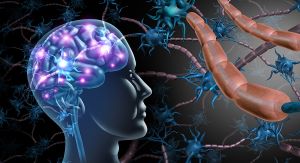 A new study published in the Journal of Nature Communications looked at social cues and the brain.
A new study published in the Journal of Nature Communications looked at social cues and the brain.
“Our study focuses on the neural foundation of monitoring others’ actions for one’s own decision-making,” study author Masaki Isoda, of the National Institute for Physiological Sciences of Okazaki, Japan, told us. “We wanted to clarify whether, and if so, how two major areas in the frontal cortex which have been implicated in understanding others’ actions, i.e., the ventral premotor cortex (PMv) and the medial prefrontal cortex (MPFC), functionally coordinate during social action monitoring.”
Although there is clear anatomical evidence that the two areas connect with each other, many studies on human subjects using functional magnetic resonance imaging (fMRI) have shown that the two areas are, somehow, rarely concurrently active during social cognition.
“Based on anatomical evidence and previous findings obtained in both humans and nonhuman primates,” Isoda told us, “I provided a hypothesis in 2016 that the two areas may collaborate closely for judging the intentionality of others’ actions. We wanted to test this hypothesis in a much simpler form, particularly because our experimental animal model was nonhuman primates.”
Isoda said he chose this study topic because the action of others provides rich pieces of information to infer their mental states, such as beliefs, desires, and intentions. Monitoring and utilizing others’ action information is of vital importance for productive social exchanges. This is the major reason why Isoda and the team wanted to clarify the neural mechanisms underlying social action monitoring.
“We used nonhuman primates (Japanese monkeys) as an experimental model,” Isoda told us. “We devised a behavioral task for two monkeys facing each other, in which they took turns making a choice for juice rewards (real agent condition; RA). We also trained the monkeys to perform the same task but with a monkey replayed in a display monitor (filmed monkey condition; FM) or with a wooden stick replayed in the monitor (filmed object condition; FO). We creased these three conditions, because we thought that the neural mechanisms underlying social action monitoring might differ depending on the biological nature of observed movement (an aspect associated with feeling intentionality in others).”
Researchers then directly monitored electrical activities of nerve cells during task performance using two thin electrodes placed simultaneously in the PMv and MPFC. They analyzed whether activities in the two areas fired synchronously and whether neural information flowed from one area to the other during social action monitoring. Finally, they reversibly blocked information flows from the PMv to the MPFC and analyzed its impact on task performance.
They chose this direction, because the information flow significantly increased from the PMv to the MPFC as the biological nature of observed actions increased (i.e., information flow, RA > FM > FO).
“Our main findings are three-fold,” Isoda explained to us. “First, the two areas do functionally coordinate during social action monitoring. Specifically, during task performance, coherent activity significantly increased between the PMv and MPFC. Second, as mentioned above, information flow significantly increased from the PMv to the MPFC as the biological nature of observed action increased.”
The researchers did not see such dependence on the others’ biological nature in the MPFC-to-PMv direction. Isoda went on to explain that thirdly, selective blockade of the PMv-to-MPFC pathway severely impaired the monitoring others’, but not one’s own, actions. This effect was the strongest in the RA condition and the least in the FO condition. Thus, the data shows that the ability of the MPFC to monitor others’ actions critically depends on input from the PMv.
“We were surprised with the finding that the neural information conveyed via the PMv-to-MPFC pathway and the effect of pathway-selective blockade both depended on the others’ biological nature,” Isoda told us. “We were also surprised with the finding that the behavioral deficits caused by pathway-selective intervention closely resembled behavioral disorders we observed in an autistic monkey with genetic mutations (which we reported in 2016).”
The findings extend the so-called (famous) broken mirror hypothesis, which has postulated that people with autism spectrum disorder have dysfunctional mirror neurons in the PMv.
“We now suggest that rather than a deficit in single neuron types (i.e., mirror neurons) in single brain regions (i.e., PMv), discoordination between the PMv and the MPFC underlies maladaptive social action processing in autism spectrum disorder,” Isoda told us. “Our intervention procedure, i.e., selective blockade of neural information from the PMv to the MPFC, may be useful as a reversible nonhuman primate model of autism spectrum disorder.”
Patricia Tomasi is a mom, maternal mental health advocate, journalist, and speaker. She writes regularly for the Huffington Post Canada, focusing primarily on maternal mental health after suffering from severe postpartum anxiety twice. You can find her Huffington Post biography here. Patricia is also a Patient Expert Advisor for the North American-based, Maternal Mental Health Research Collective and is the founder of the online peer support group - Facebook Postpartum Depression & Anxiety Support Group - with over 1500 members worldwide. Blog: www.patriciatomasiblog.wordpress.com
Email: tomasi.patricia@gmail.com